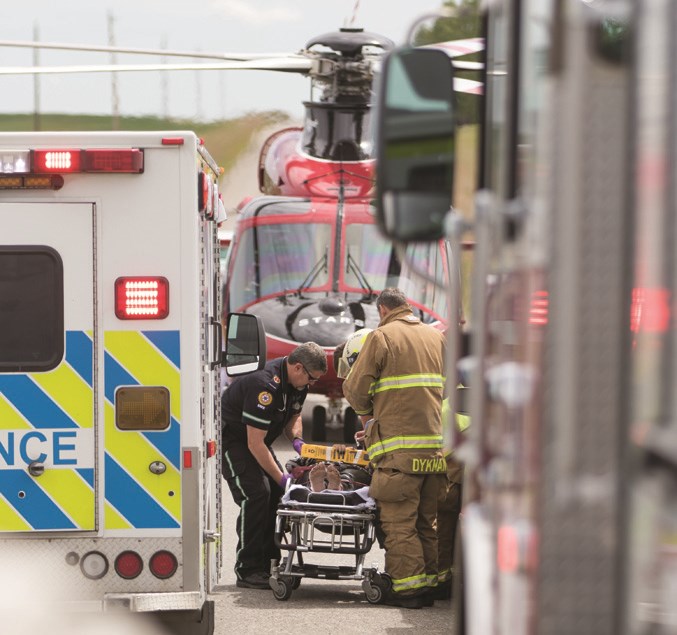There will be new standards in place for emergency call centres in Alberta by June 2019. The Alberta Emergency Management Agency AEMA) worked with all Public Safety Answers Points (PSAPs), or 911 call centres, over the last two years to establish a list of standards for all 21 call centres in the province. “As a result of the collaboration, these standards are in place to basically accomplish two things – create consistency across the province and also to better prepare Alberta for the roll-out of next-gen 911 technology,” said Suzanne Oel, chair of the Foothills Emergency Services Commission (FRESC). Technological enhancements include texting and more accurate GPA locating for callers who may not be able to speak, or in case of someone passing out during a call, she said. The PSAPs and AEMA narrowed their recommendations down to five standards. The first is having a benchmark time for call-answer and call-transfer, she said. Calls should be answered within 15 seconds, 95 per cent of the time and transferred to the appropriate agency (ambulance, fire or police) within 60 seconds, 95 per cent of the time. “These are international standards we’ve already achieved at Foothills 911,” said Oel. The second requirement is that every PSAP has its own back-up plans for high volume, emergency situations and power or phone outages, she said. Linked closely to that is the third standard, which requires an emergency response plan be in place to ensure no calls are ever unanswered due to service outages, and that each call centre have a full back-up site, she said. FRESC is well on its way to establishing its back-up plans, she said. “We moved to our new centre in Okotoks around a year ago and we’ve used our former centre in Black Diamond as a back-up centre, so we just have to ensure that it can function as a full back-up centre,” said Oel. A fourth standard is to have quality assurance plans, which means reporting regularly on call centre activity, she said. It’s also something Foothills 911 has already had in place for some time, she said. “We’ve always had this internally,” said Oel. “So that’s nothing new for us, except that we now have someone to be reporting to. It includes compliance, preparing reports and site visits that will occur.” Call centres will file their reports with Alberta 911 Programs, a branch of the AEMA, she said. The last standard is how to handle frivolous 911 calls, she said. It’s nothing 911 centres haven’t dealt with in the past, but the new strategy allows people to be charged for making prank calls. “They have included $5,000 for the first offence as an option and $10,000 for repeat offenders, which could certainly scare some people,” said Oel. “These are people who actually, unfortunately, abuse the system and waste the time and tie up the line.” Each PSAP has about one year to achieve compliance with the new standards, which should be in place by June 12, 2019, she said. For FRESC and Foothills 911, there are really only two action items on the list – adjusting the reporting style and completing work on the back-up site in Black Diamond to ensure it is fully-functional. “There isn’t much work to do there, and that’s our final task, really,” said Oel. “So we don’t have a lot of work to do to ensure compliance. We’re very pleased that Foothills has the best of the best. We’re very proud of that.” Though the standards will help achieve more streamlined emergency call service, she said it’s disappointing to see the list does not address any standards for calls to EMS centre, which is where Foothills 911 still has concerns. Wait times for people in emergency situations can often be long, and sometimes life-threatening, she said. It’s something they’ve been working toward fixing with the Province for some time, particularly over the past two years. Part of the problem has been knowledge of the Foothills area and locating emergencies. “We are trying to work with Alberta Health Services on a CAD-to-CAD solution there and to improve the time gap issues that occur,” said Oel. “Certainly we’re holding up our end of the bargain.”




